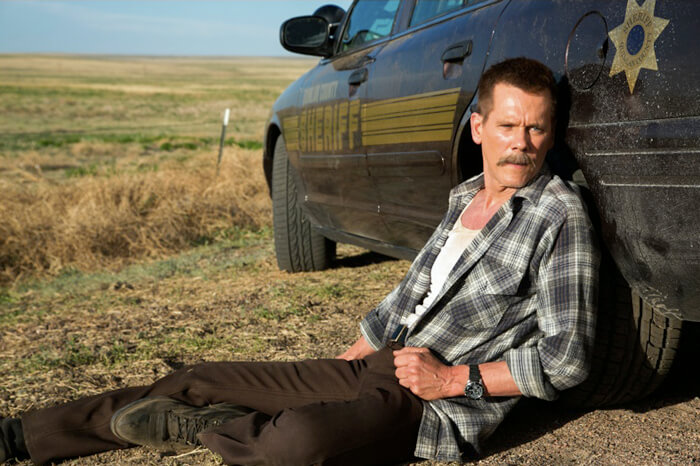Bad Cop Kevin Bacon Chases Joyriders in the Lean, Mean Cop Car


Directed by Jon Watts
Opens August 7
Take out some of the gore and swearing, and Cop Car could work as a refreshing throwback to an age of children’s films that sought to replicate the danger and horror of old fables and bedtime stories. The film tracks two prepubescent runaways, Travis (James Freedson-Jackson) and Harrison (Hays Wellford), who stumble across an abandoned police cruiser in the middle of the woods and take it for a joy ride. Unfortunately for them, the car belongs to a corrupt local sheriff (Kevin Bacon), a moonlighting drug runner who had just gotten through disposing of the corpse of a rival before returning to find his vehicle gone.
At this stage, the film sets up a chase through the Southwestern countryside, Night of the Hunter as written by Cormac McCarthy.
Instead, the focus gets thrown onto Bacon’s sheriff whose brutal efficiency is compromised by his barely restrained panic at what will happen if anyone finds his car before he does. Several scenes even wring a wry humor out of a reckless cop forced to obey the law while chasing down his patrol vehicle, as in the scene where he stops at a red light in a stolen car only because he is afraid of the traffic cameras. Bacon long ago channeled his youthful smarm into villainous arrogance, but here plays evil with far more simplicity, every nerve attuned to covering his ass. The actor radiates so much tense energy that he threatens to make the scenes with the kids look flaccid in comparison, lessening the dangerous innocence of their play.
For the most part, however, this is what a b-movie should be: lean, mean, and filled with just enough longueurs to be evocative without slowing the pace. The film is so spare that even a throwaway character (Camryn Manheim) who early on spots the boys finds herself involved in the bloody climax, which plays upon a foreseeable twist with nonetheless tense results. By not getting bogged down in exposition, Cop Car prioritizes its physical inertia, using its minimal structure to add a greater sense of catharsis to a simple, if grisly, conclusion.
You might also like 




















